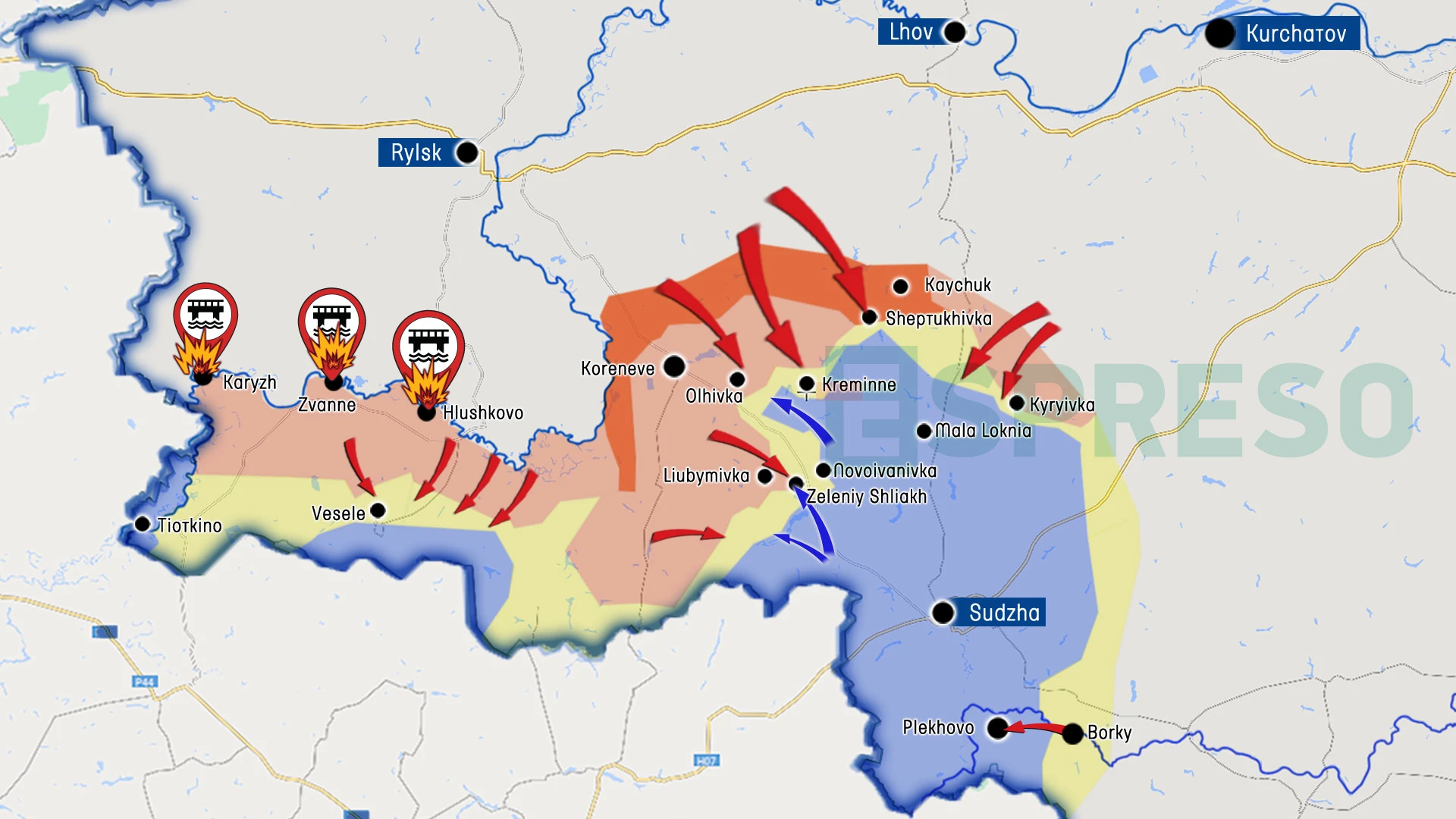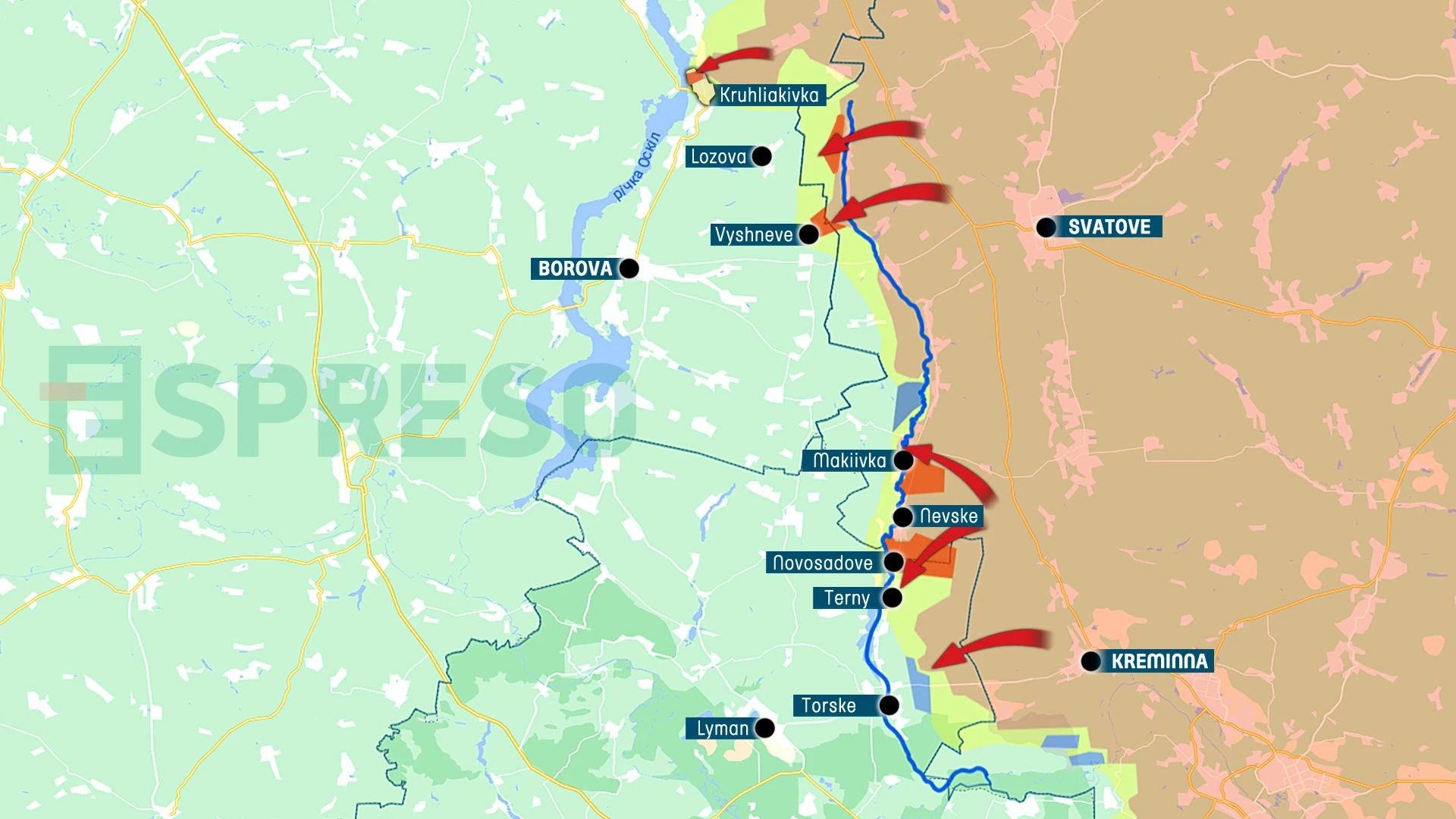
North Korean troops to lead assault waves for Russia in Kursk region. Serhiy Zgurets' column
The Kursk region is becoming a zone where combat involving North Korean military forces is expected soon. This will mark the direct involvement of a third country in Russia's war against Ukraine
Situation in the Kursk region
Starting with the situation in the Kursk region, since August 6, Ukrainian forces have been operating there, maintaining a foothold that has shrunk from 1,200 km² to 700 km². To displace Ukrainian troops, Russia has deployed over 50,000 soldiers in addition to the 8,000 already stationed along the border. Russian losses in this sector since August amount to over 18,000 soldiers, either killed or wounded.
Now, the Kursk region is set to see combat involving North Korean forces. This signifies the direct participation of a third country in Russia’s war against Ukraine. Reports indicate that North Korea has sent between 10,000 and 12,000 soldiers to Russia, including 500 officers and 3 generals, among whom are the Commander of Special Operations Forces, the Chief of Intelligence, and the Chief of the General Staff's Operations Directorate. This suggests that North Korea aims to gain new combat experience, though it may be their last.

The North Korean soldiers have been trained at Russian facilities, focusing on coordination with artillery, clearing trenches, and using drones—skills that are new for them. However, they have not yet seen actual combat.
According to the Ukrainian Center for Countering Disinformation, there was an attack on a concentration of North Korean troops in the Kursk region, though details are not yet available.
Ukrainian forces in the Kursk area report that these North Korean soldiers are currently being integrated into Russian airborne brigades. Specifically, up to 2,000 North Koreans have been assigned to the 51st and 137th regiments of the 106th Division, as well as to the 56th Air Assault Regiment and the 11th Separate Air Assault Brigade.
For now, combat in the Kursk region has slowed, likely due to Russian forces regrouping. The reduction in Russian attacks may indicate that North Korean soldiers are being positioned within Russian combat formations and could be used in the initial waves of upcoming offensives.
Future combat in the Kursk region is expected to intensify, particularly in the triangle between Liubimovka, Zeleny Shlyakh, and Novoivanovka, a key logistical route from Korenovoye to Sudzha. This area is strategically significant for Ukraine, and Russia is aware of its importance, so intensified action is likely here.
It’s worth mentioning that Ukraine has deployed powerful brigades in the Kursk region. There are calls to redeploy these brigades to other fronts, such as the Pokrovsk and Kurakhove areas, to counter Russian forces there. However, military-political considerations currently outweigh military expediency. These brigades are effectively eliminating Russian forces in the Kursk area and tying down enemy resources that could otherwise be deployed elsewhere. They are also equipped with high-quality Western equipment, including Stryker APCs, which enhance the effectiveness of Ukraine's paratroopers in this region.
The recent American aid package included over 200 Stryker APCs, a significant reinforcement for Ukrainian brigades. Nonetheless, more equipment and well-trained personnel are still needed. This combination is crucial for creating an advantage over the enemy.
Lyman-Kupyansk front
Let’s examine how Ukraine’s advantage is being leveraged on other fronts, specifically along the Lyman-Kupyansk axis, where the National Guard’s Rubizh Brigade is defending.
Danylo Borysenko, the chief of reconnaissance for the anti-aircraft missile and artillery division of the Rubizh Brigade, reported that over the past day, the Russian army attempted more than 20 assaults on the Lyman-Kupyansk line, all of which were successfully repelled by Ukrainian defenders. Despite suffering heavy losses, Russia persists in its attempts to advance.
Russia's primary strategy remains unchanged, relying on small infantry groups. However, they have also been observed using armored vehicles, including tanks, infantry fighting vehicles, and MT-LBs (multi-purpose light-armored towing vehicles). A key role here is played by FPV (first-person view) drone operators, who strike enemy forces at a distance of 1–2 kilometers, even before they reach Ukraine’s forward positions.

Borysenko noted that Russia has started deploying small, compact electronic warfare (EW) systems on their ZALA drones. These systems disrupt the control signals for FPV drones if they detect them. In one encounter, a standard FPV drone was jammed by EW, causing it to flip and return to base. However, a second attempt was made with a modified drone, which was designed in the brigade's laboratory with adjusted control frequencies, allowing it to successfully destroy the Russian ZALA drone. This incident illustrates the continuous advancements in FPV technology and the ongoing process of enhancing and modifying drones.
The soldier also noted that the intensity of Russia's actions varies across different front lines. On the Lyman and Siversk axes, Russian activity remains steady, with no significant escalation. However, on the Kupyansk front, the invading forces are notably more active. Russian troops are adaptive and learn quickly, making the situation constantly tense and challenging.
Borysenko pointed out that drones are modified first, followed by enhancements to countermeasures, meaning EW often lags one step behind. EW systems are also generally more expensive than FPV drones. For example, a vehicle-mounted EW complex should cover at least four control frequency bands and two video transmission frequencies.
Most EW equipment manufacturers allow for the addition of modules to target specific frequencies, meaning existing complexes can be upgraded. Additionally, drones with fiber-optic control, which are now beginning to appear, are immune to EW since all data is transmitted via fiber-optic cable. Even within a single unit, there are various types of drones: kamikaze drones, bombers, drones for transport and logistics, and anti-aircraft drones for detecting and destroying aerial targets. In other words, a broad array of drones is now in use.
- News











































